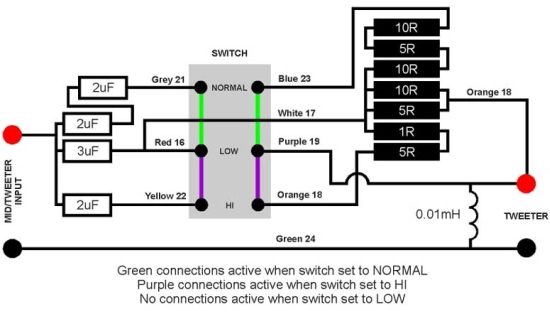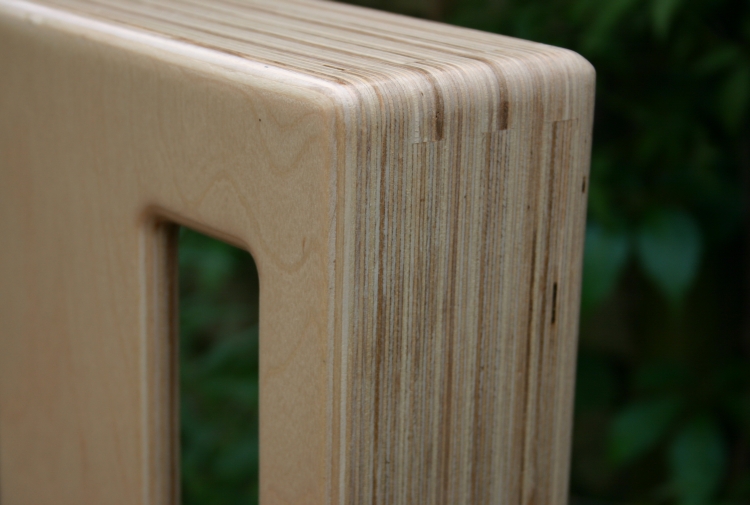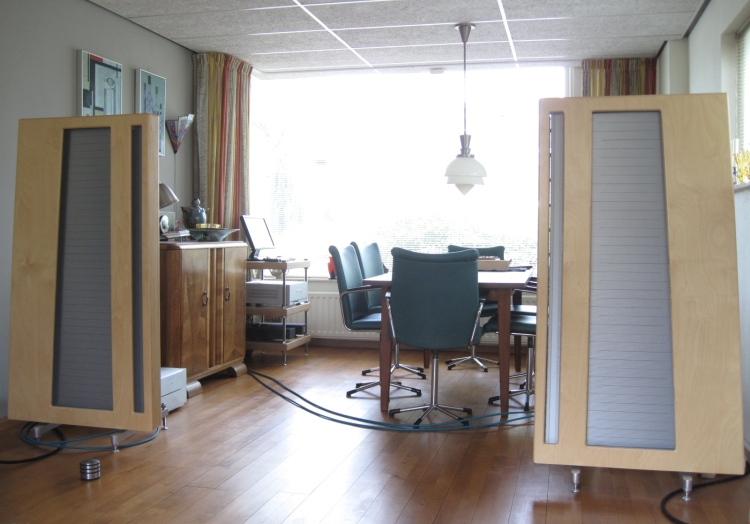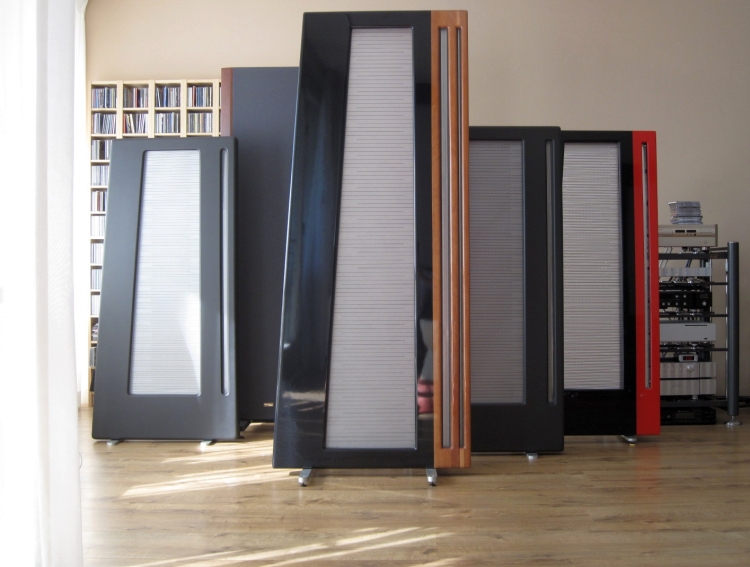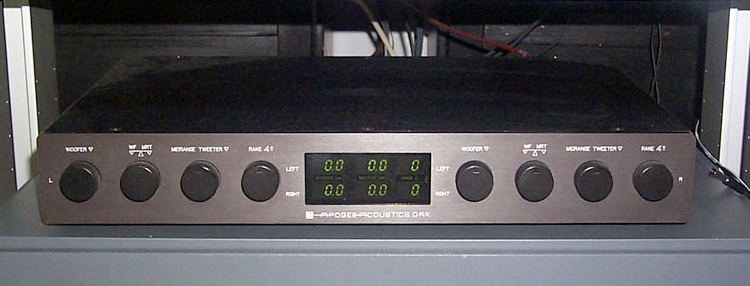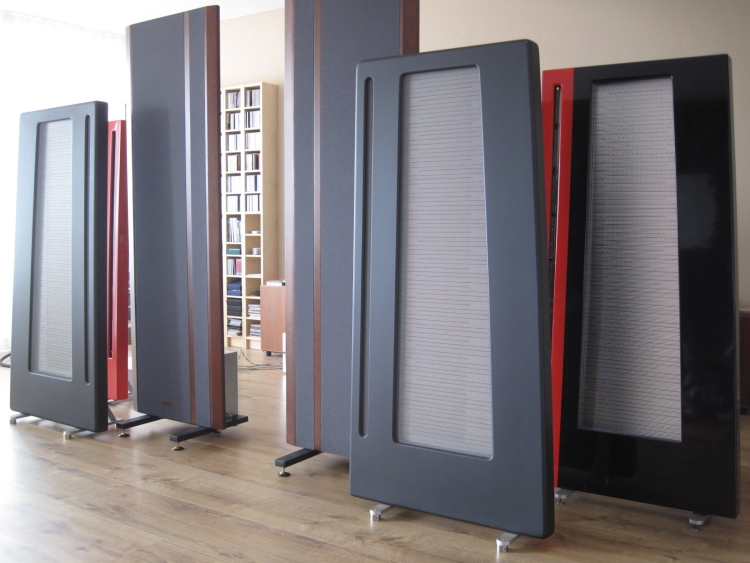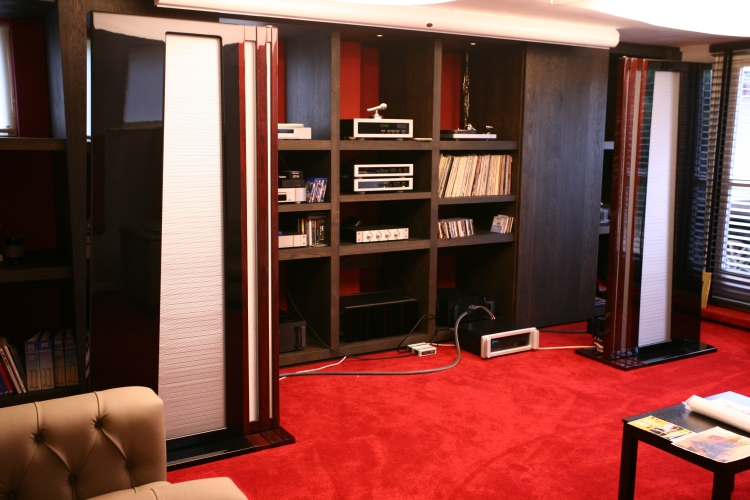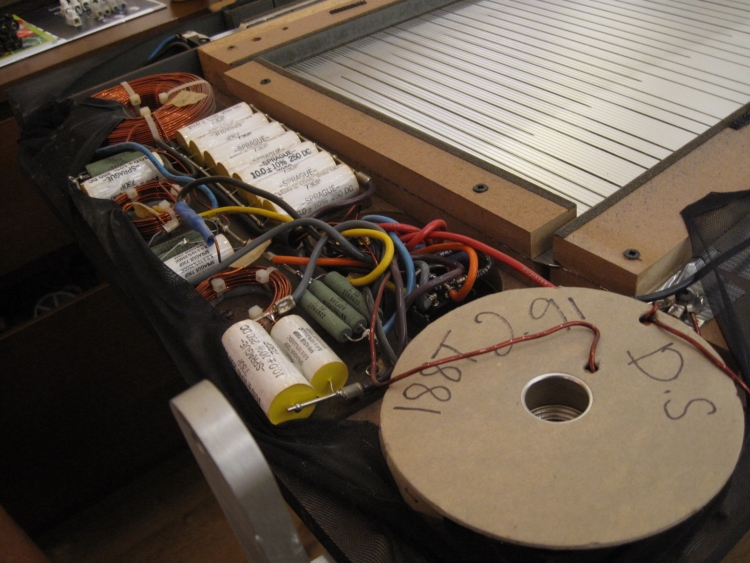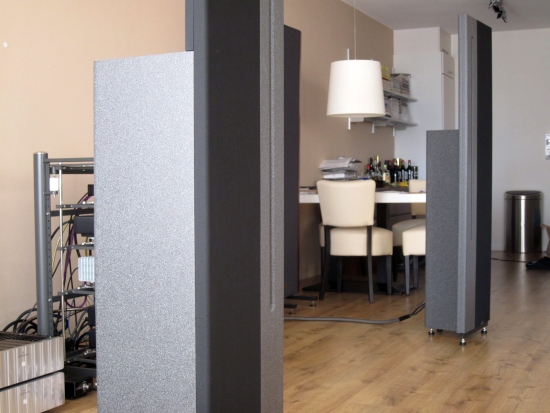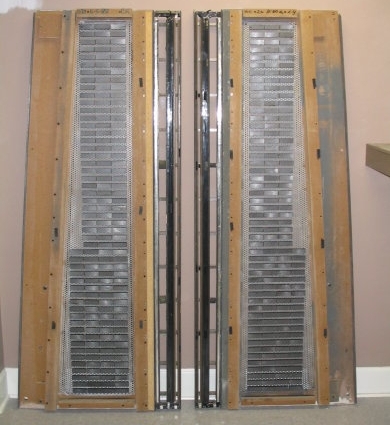
Inside pictures of the Apogee Diva
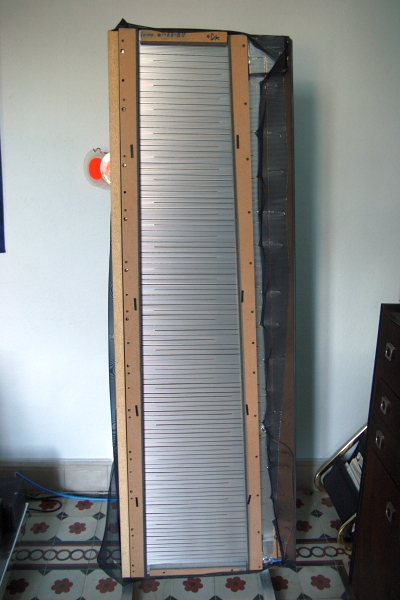
Above: seen from the front, without cover – Midrange and Tweeter Ribbon part (steel cage) removed.
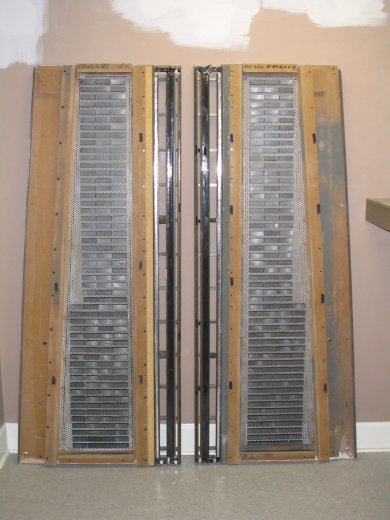
Above: Foils removed, showing magnets top to bottom – this is what determines a large portion of the Diva’s weight.
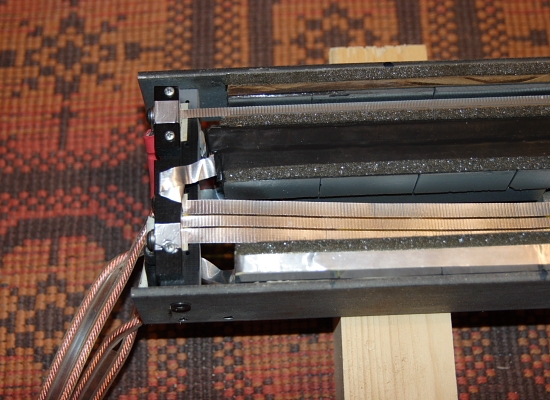
Above: midrange/tweeter steel cage. The midrange ribbon needs tensioning or replacement.
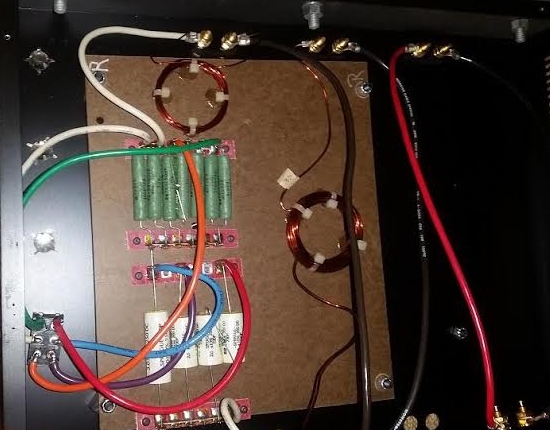
Above: Diva crossover, wired for use with DAX, meaning that only the crossover from midrange to treble is still passively filtered, the bass and midrange being routed straight from input to output.
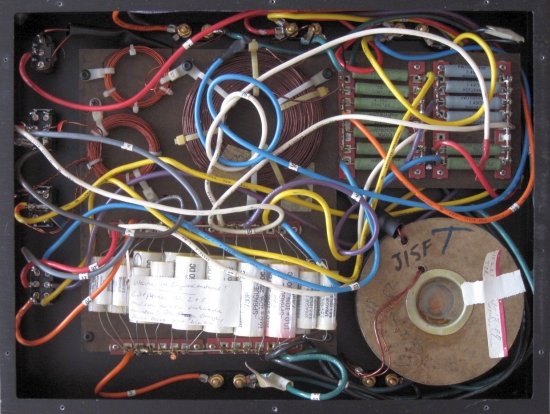
Above and below: Regular Diva Crossover (for full passive use, without DAX). This particular sample’s wires however are not quite as neat as they normally are, likely due to a previous owner having made changes to accommodate DAX use, then restoring it again. The next pictures are of the same unit.
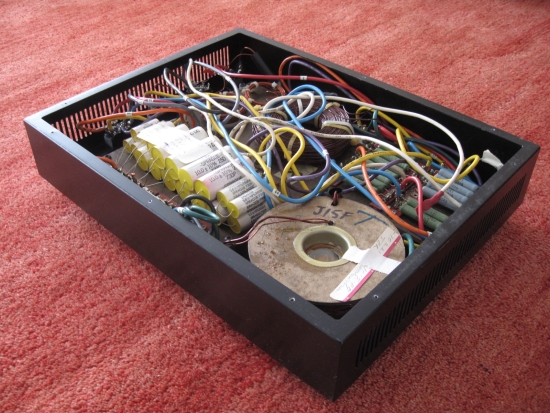
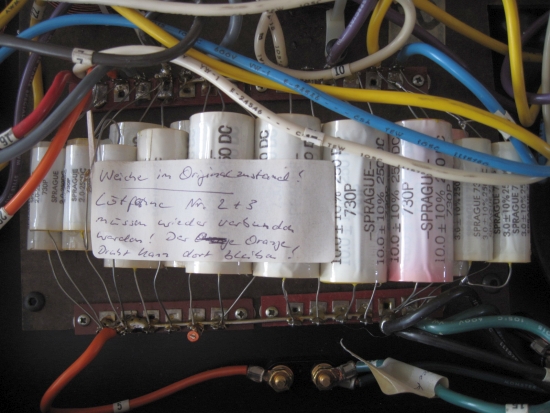
Above: All capacitors (bass, midrange and treble) are in one place, which helps explaining the need for so many wires. (the 4 switches are the other reason). The note is from the previous owner.
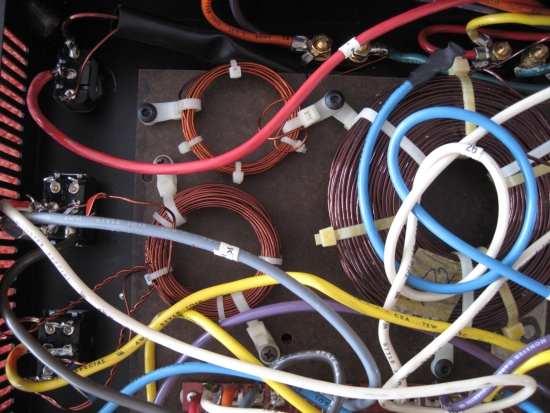
Above: Midrange- and treble coils/inductors.
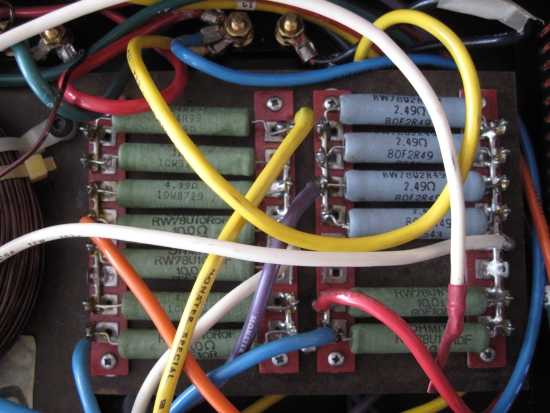
Above: The resistors are also all in one place.
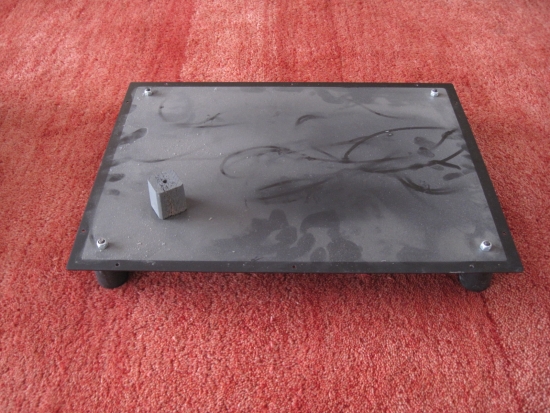
Above: The wood block on the bottom plate holds the big woofer coil in place. The latter has two windings with different AWG sizes, that each connect to the switch on top of the crossover.
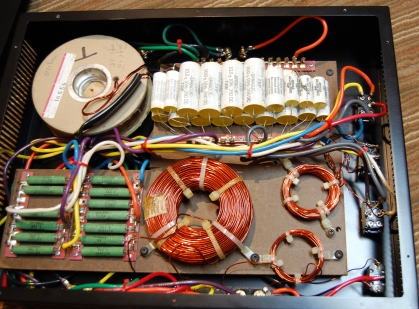
Above: Original, neat and tidy, unmodified Diva crossover. If you have a pair lying gathering dust, let me know!
Tweeter schematic
Midrange schematic
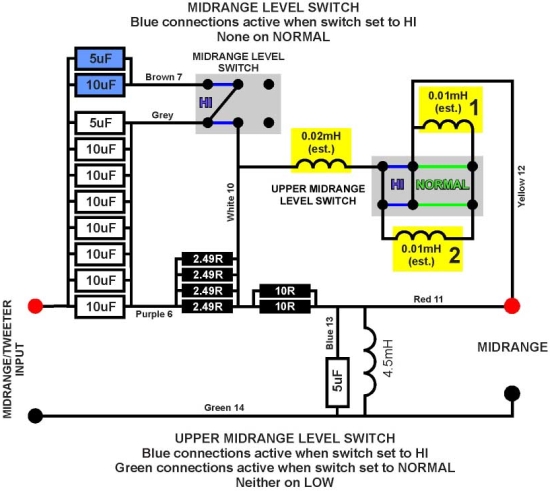
Woofer schematic
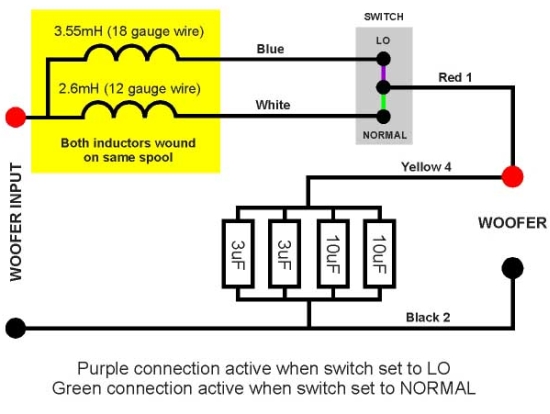
Alternative schematics
I am no crossover expert, but they seem consistent with the ones above, and these ones are a lot easier to interpret.
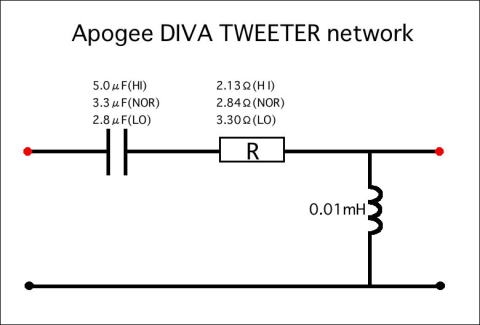
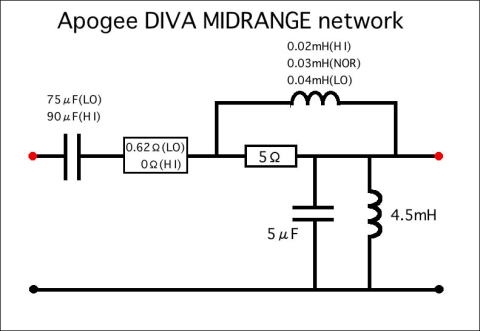
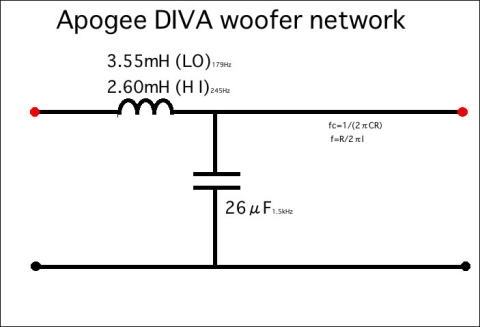
About the crossovers values
Among Apogees of the same model differences can and will be measured, that’s just the way it is. So please use the above schematics as a starting point only and then let your ears be the judge.
Finally, when the SLW tweeter replacement is used for the Diva, Graz told me that a small crossover mod that deviates from the above schematics is required: the last tweeter resistor value generally should be in the range of 2.25-2.5 ohms, depending on the taste of the user. This is in the context of an all-original other xover. I actually ended up using a value slightly lower than that, derived by ear. It must be noted that I heard very large differences between brands and kinds of resistors though. With Mundorf I felt I needed to go lower than with Jansen, the latter causing treble sibilance at some stage where the Mundorfs remained fluid.
Resistor sound
While on the subject: Mundorf M-Resist Supreme are great in the midrange where they provide a more voluptuous and “live” sound than normal Mundorf MOX resistors, but in the treble the Supremes come across as a bit coarse and I preferred the sweeter and more airy sounding normal MOX ones.
